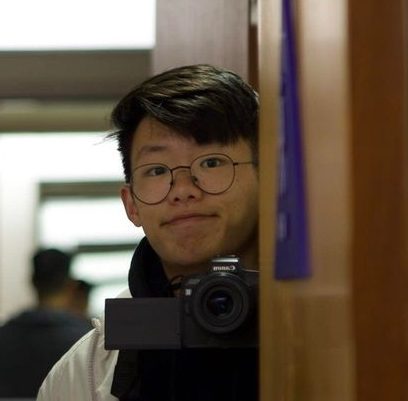Tania Sodhi

The spotted fever group Rickettsiae (SFGR) are a collective group of Gram-negative obligate pathogens from Rickettesia spp. Most bacteria in the SFGR use two effectors to mediate actin-based motility (ABM). This is in contrast to other intracellular pathogens, which utilize only a single effector for ABM. The goal of my research project is to understand how Rickettsia parkeri, a member of the SFGR family, regulates the expression of two effectors that mediate ABM: RickA and Sca2. While both effectors are involved in mediating ABM, the regulation for both effectors and […]
Emilie Tu

Contactin-associated protein-like 2 (CNTNAP2) mutations are strongly associated with autism spectrum disorder, which presents with repetitive behaviors. Research has shown that mice lacking CNTNAP2 exhibit decreased numbers of GABAergic interneurons throughout the brain, and that the number and function of these interneurons in the striatum are associated with the presentation of repetitive behaviors. Recent work has shown that enriched environment rearing restores GABAergic interneuron numbers in the striatum and rescues behavioral deficits in rodent models of neuropsychiatric disorders. I will be looking at how different rearing conditions affect striatal gene […]
Daniel Rostamloo
Algebraic geometry is a rich area of mathematics that investigates the properties of geometric objects (like a variety the solution set of a system of polynomial equations) using their underlying algebraic structure. The closely related field of homological algebra studies how mappings between algebraic spaces (e.g., collections of polynomials) can be understood in terms of more concrete representations with tools from topology and algebra combined to understand the geometric structure of varieties. One homological invariant is a table of numbers called the Betti table, which captures nuanced geometric information about […]
Jessica Stewart

My research focuses on a kinase in the MAPK/ERK pathway called BRAF, which is commonly mutated in cancer. This summer, I will isolate BRAF endogenously from 293FT cells and analyze their structure by native mass spectrometry and cryo-electron microscopy. This strategy differs from most conventional approaches, as I will not overexpress the protein. Rather, I aim to study BRAF isolated from its native stoichiometric environment, circumventing assumptions that must be made with overexpression. With this strategy, I seek to learn about BRAFs activation and native binding interactions. This knowledge could […]
Amy Wu
This research project examines the rich history and future of midwives of color in the Bay Area through the novel implementation of Science, Technology and Society (STS) frameworks. By defining the midwifery model of care conceived by Bay Area midwives of color as a complex sociotechnical system, the process by which midwives of color have created their models of care can be explored at the intersection of the nation’s capitalistic healthcare system, historic attempts to destroy the knowledge produced by grand midwives in the antebellum period and broader African diaspora, […]
Divij Sharma

Strong gravitational lenses (deflection of light into multiple images by gravitational field of mass concentrations like galaxies) have been used as cosmological probes. These techniques involve ratios of distances between the observers, lens, and source. DSPL systems involve two sources lensed by the same foreground mass concentration. They provide a unique cosmological geometric probe through distance ratios involving the source and lens. Cosmic acceleration has been described using a form of energy called dark energy. Previous work by my advisor has shown that the DSPL key distance ratio is nearly […]
Alexander Richardson

Geometric flows, such as the Ricci flow, Yang-Mills flow, and harmonic map flow, are natural ways to smooth out geometric objects (metric, connection and maps, respectively). In this research project, we will explore the idea of using geometric flows to develop new analytic tools for studying geometric objects. A possible goal of this project is to use geometric flows to solve problems in dispersive PDEs that involve geometric objects.
Jacob Krantz
Geometric flows, such as the Ricci flow, Yang-Mills flow, and harmonic map flow, are natural ways to smooth out geometric objects (metric, connection, and maps, respectively). In this project, we will explore the idea of using geometric flows to develop new analytic tools for studying geometric objects. A possible goal of this project is to use geometric flows to solve problems in dispersive PDEs that involve geometric objects.
Xiaoyue Mei
DNA methylation (DNAme) refers to the addition of a methyl group to the cytosines of the CpG islands in the gene regulatory regions, which is involved in regulating transcription and chromatin structure, typically silencing the corresponding genetic locus. A lifetime of accumulated epigenetic changes has been proposed to contribute to the development of age-associated diseases. I aim to investigate the biological relevance of DNA methylation clocks via Elastic Net regression approaches and to develop a better model by which chronological age could be correlated with the disease through epigenetics. Meanwhile, […]
Albert Qiang

Metabolically engineering living organisms to synthesize chemicals is an exciting alternative to traditional production pipelines, allowing for the sustainable and scalable production of a wide array of useful compounds. However, dramatically altering the fundamental chemical behavior of organisms by introducing new biosynthetic pathways can often have unintended consequences on cellular growth. The expression of an unnatural pathway consumes valuable cellular resources, an effect known as metabolic burden that ultimately limits overall production. My research project seeks to better characterize the effect metabolic burden has on an existing engineered biosynthetic pathway […]